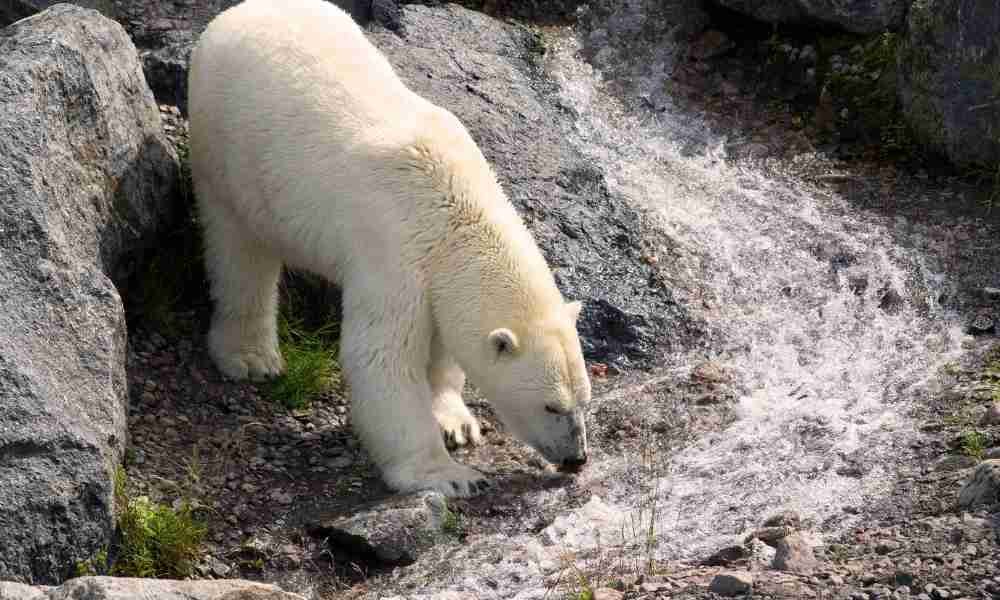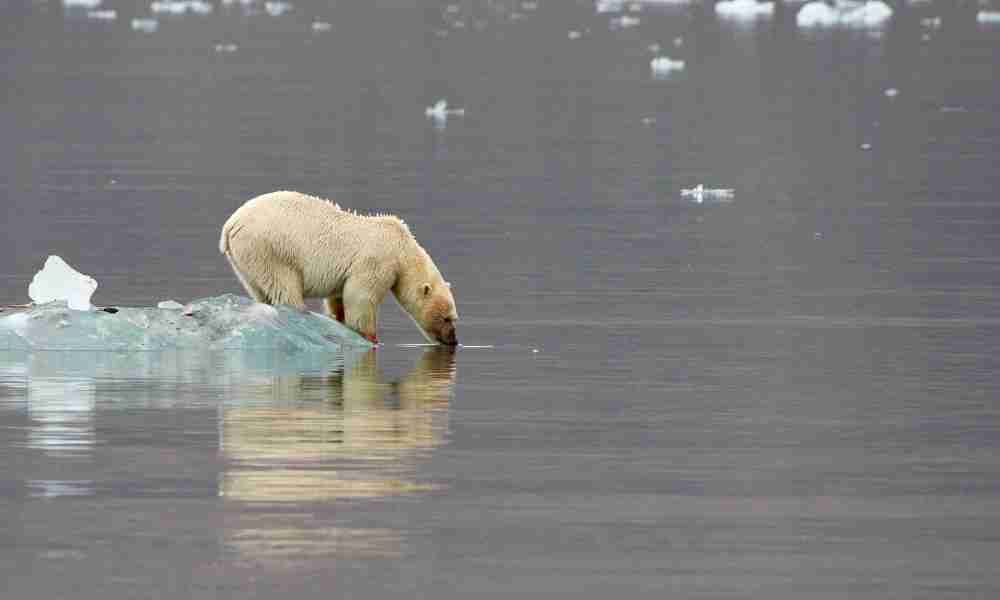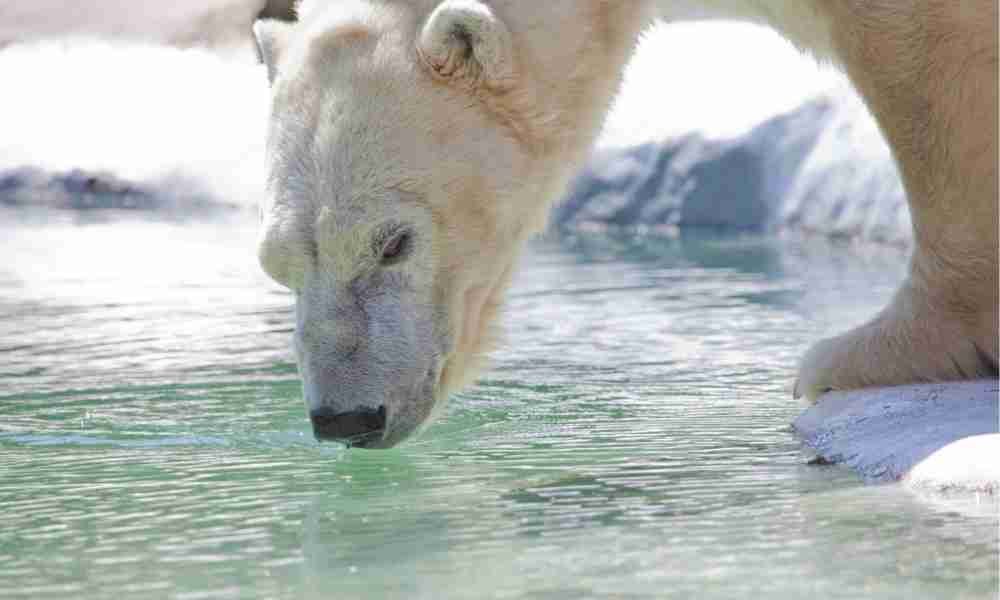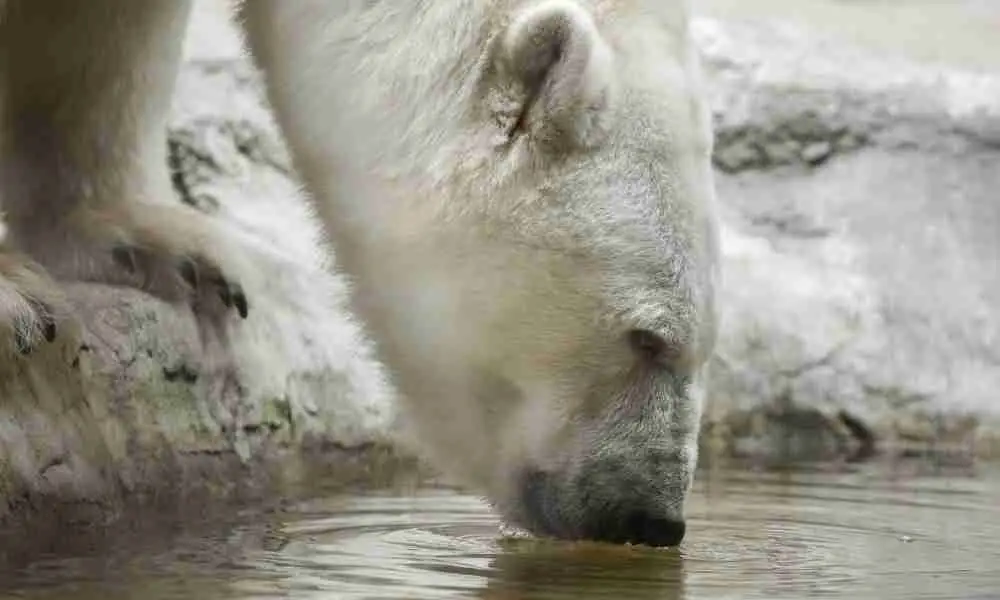Water proves to be essential for the survival of many mammals. Since polar bears are mammals, they drink water too, right?
Yes, polar bears usually drink fresh water but only on several occasions. Most of the time, they get water supply from the chemical reaction in their bodies.
Specifically, this water comes from broken-down fats in their bodies.
Now you know polar bears drink water like other mammals. These bears need water to survive too.
In this article, you will find places where polar bears drink water, occasions for drinking, and other facts.
Let’s continue reading below!
Where Do Polar Bears Drink Water?
Polar bears drink water from several places that contain fresh water. Here are the different places where these mammals drink their water.
Snow
Snow is one of the most common water sources for polar bears in the Arctic region. Interestingly, these bears may scoop snow and consume it to hydrate.
This happens as the snow melts in their mouths and turns into water.
Melting Sea Ice
The melting sea ice is readily available in the polar bears’ environment. As a result, they take this as an advantage and use the melting ice as a good water source.
Furthermore, polar bears may lick moisture on the ice surface. So this means sea ice does not have to melt completely to be a good water source for polar bears.
River Mouths

Most rivers usually dump their water in oceans. Therefore, there are several river mouths emptying this water. Polar bears use this special river feature to get water for drinking.
Additionally, arctic mammals only drink water from river mouths as a last option. This is because river mouths are not their primary source of water.
Coastal Areas

Polar bears live in coastal areas and use this as an advantage in their search for water. Regions near the coastal line have freshwater streams.
Hence, when polar bears are thirsty, they occasionally drink from these streams. However, coastal areas are not their main source of water. This occasion is common during warm seasons in the Arctic.
Crevasse (Icy Crevices)
In the arctic regions, it may be common to find cracks or crevices on glaciers or icebergs. Polar bears may also obtain water from these crevasses once they come across them.
Meltwater Ponds
During warmer seasons in the Arctic, it may be common to find several ponds containing melting water. These ponds also act as a source of water for polar bears.
Understand that the melting ponds on the Arctic lands are only temporary. For this reason, it’s rare for polar bears to drink from these ponds in colder seasons.
Rain Water
Rain is not a common occurrence in the Arctic. Nevertheless, polar bears may encounter it once in a while.
They create temporary waterways like streams on the grounds. And this occasionally becomes a drinking source for polar bears.
Human Structures
These are rare structures like artificial ponds that also serve as water sources for polar bears. Research stations, in particular, are usually responsible for these water structures.
As a result, polar bears may get water from here all year round, unlike most seasonal sources.
How Do Polar Bears Drink Water?
Polar bears may consume water from different sources in multiple ways. And the method depends on the water source. See them below:
Dipping Mouth in Water
This method is the primary way that polar bears use to drink water. They dip their mouths in water ponds like most other wild animals.
However, polar bears drink water this way only from ponds or streams.
Licking Ice
Polar bears can also drink water by licking ice. For this reason, they get a little amount of water at a time.
Interestingly, their tongues are muscular and powerful. And this allows them to move huge ice chunks.
Licking their Paws
Polar bears sometimes grab water from ponds with their paws and lick with their tongues. Their paws are special for this function because of their rough texture.
Therefore, they can grab more water for licking at each interval.
How Much Water Do Polar Bears Drink in a Day?

Polar bears can drink up to 0.26 gallons (one liter) of water daily, though sometimes it may be less. Additionally, the amount of water they drink may vary depending on their daily activities.
There are some occasions when these mammals drink more. This scenario mostly occurs when prey is scarce. Polar bears obtain most of their water from feeding on other animals.
How Long Can Polar Bears Go Without Drinking Water?
No specific period defines how long polar bears can go without water. However, these mammals can go for several months without water.
The chemical reaction from breaking down fats to water inside the polar bears’ bodies gives them enough hydration.
Related Questions:
Do Polar Bears Drink Sea Water?
No, they do not drink seawater since it contains too much salt. The high salt content in seawater can cause massive dehydration in these creatures.
So, instead of hydrating them, it’ll be doing the opposite. In addition, this could further lead to illnesses like kidney failure and other digestive issues.
Do Polar Bears Drink Milk?
Yes, polar bears drink milk at a young age. Polar bear cubs need to drink milk from their mothers to develop and remain healthy. Their mothers’ milk happens to be their main food at that time.
What’s more, these cubs may drink milk for about two to three years before their natural immune systems become strong.
Do Polar Bears Drink Coke?
No, polar bears do not drink Coke. This drink isn’t part of the foods in their natural habitat. Generally, these animals cannot drink anything that is carbonated.
Drinking Coke may also cause health problems like nutritional imbalance in polar bears.
Final Thoughts
In conclusion, it is clear that polar bears drink water but not from salty sources. They also drink only on several occasions since their bodies can generate water naturally from chemical reactions.
Remember, some of the leading water sources for polar bears include:
- River mouths
- Human structures
- Icy crevices
- Snow
- Rainwater
Sometimes, there may be a scarcity of water in low areas. As a result, polar bears may climb higher areas to look for more sources.
Does this mean that polar bears can go even higher into the mountains? Find out more in the article – Can Polar Bears Climb Mountains?
Sources:

